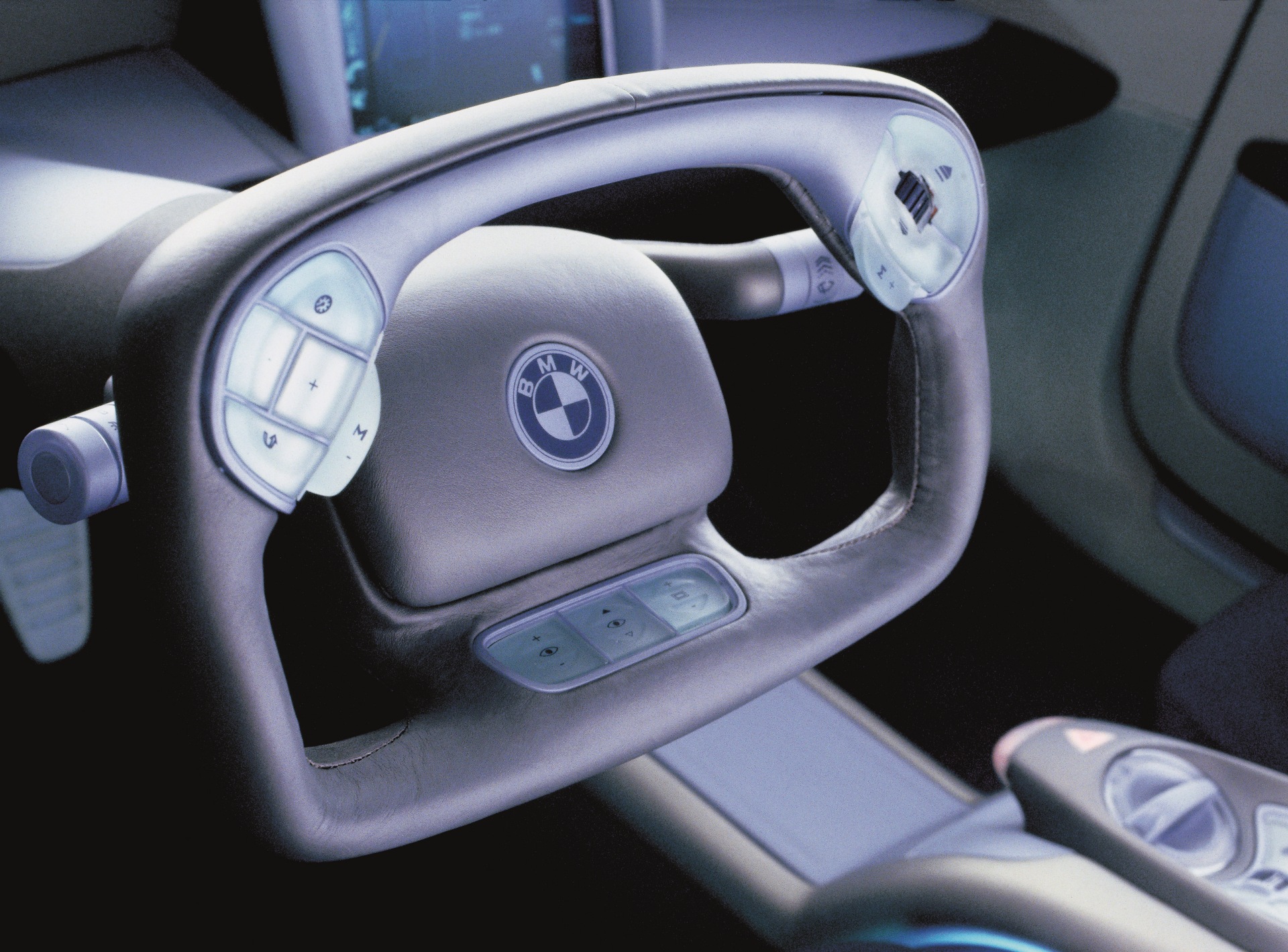The steering wheel, often overshadowed by a car’s exterior design, is one of the first tactile connections between driver and vehicle. It bridges the gap between human intent and machine execution, setting the tone for the driving experience. A well-designed steering wheel not only feels incredible but also establishes trust between driver and car even before the engine roars to life.
As we step into an age of autonomous vehicles, the traditional steering wheel faces an uncertain future. To celebrate its legacy, here’s a tribute to 14 of the most unconventional designs in automotive history, showcasing their creativity, boldness, and impact.
Exploring Design Creativity
Chevrolet Corvair Testudo
Debuting at the 1963 Geneva Motor Show, the Chevrolet Corvair Testudo introduced a flat-bottomed and flat-topped steering wheel, a pioneering feature for its time. Giorgetto Giugiaro’s metal-rimmed two-spoke design with perforations exuded minimalistic charm.

Lancia Beta Trevi
With its curved spoke and unconventional alignment, the steering wheel of the Lancia Beta Trevi mirrored the eccentricity of its ‘Swiss cheese’ dashboard. Though asymmetrical, the design captured attention with its quirky yet functional appeal.

Concepts That Challenged Tradition
Maserati Boomerang
The Maserati Boomerang’s compact, four-spoke steering wheel pushed the boundaries of functionality. Designed for palm steering, it showcased futuristic aesthetics but limited traditional maneuverability.

Lancia Stratos Sibilo
Bertone’s 1978 Stratos Sibilo featured a toy-like, multi-functional steering wheel that matched its spaceship-inspired design. Ergonomic and artistic, it embodied innovation and imagination.

Innovation in Aerodynamics
Subaru XT
With its inverted ‘L’ design, the Subaru XT’s steering wheel optimized the quarter-to-three driving grip, aligning perfectly with the car’s aerodynamic principles.

Citroen DS21
The Citroen DS21’s single-spoke wheel was a revolutionary blend of elegance and simplicity. Wrapped in leather, its portal-like center became a hallmark of sophisticated design.

Futuristic Functionalities
Mazda MX-03
The Mazda MX-03’s dual-grip design and digital controls reflected jet cockpit influences, blending high-tech aesthetics with ergonomic engineering.

Lamborghini Athon
Marc Deschamps’ Lamborghini Athon redefined steering wheel design with a floating, single-spoke masterpiece that combined form and function in a mesmerizing way.

Digital Advancements
Citroen Osmose
The Citroen Osmose replaced traditional mechanics with a fixed touchscreen interface, heralding the era of interactive steering technologies.

BMW Z22
A leap into the future, the BMW Z22 combined steer-by-wire technology with multi-function controls, incorporating fingerprint scanning and advanced HUD systems.

Craftsmanship Meets Innovation
Spyker C8 Spyder
The Spyker C8 Spyder’s propeller-inspired aluminum wheel fused luxury and art, serving as a striking focal point in its elegant interior.

Pagani Zonda R
The Pagani Zonda R’s Alcantara-clad carbon-fiber wheel housed a tachometer, seamlessly merging racing functionality with opulence.

Experimenting with Form
Ford Wrist Twist
Ford’s Wrist Twist system eliminated the traditional wheel in favor of two smaller ones, enhancing visibility and comfort. Though short-lived, it highlighted the potential for radical redesigns in automotive history.

From artistic expressions to technological marvels, these steering wheels symbolize the intersection of creativity and engineering. As we embrace autonomous driving, they remind us of the profound connection between driver and machine, a bond forged through the simplest of gestures: taking the wheel.

